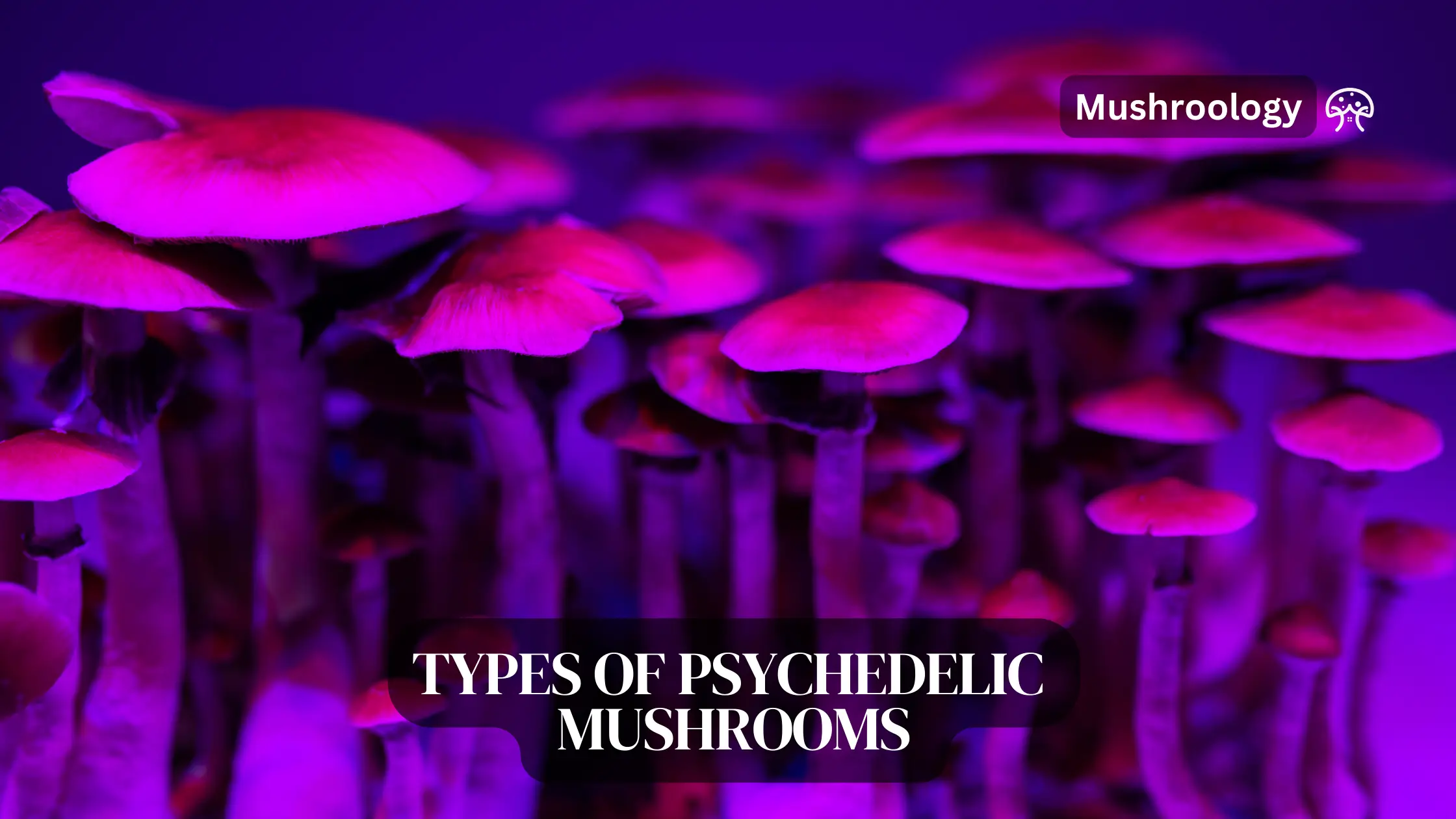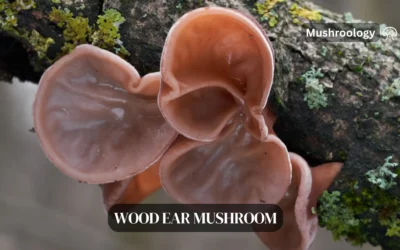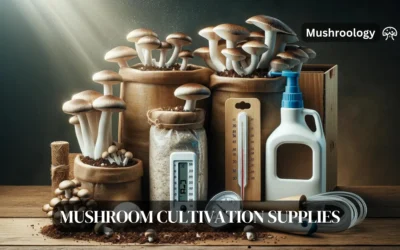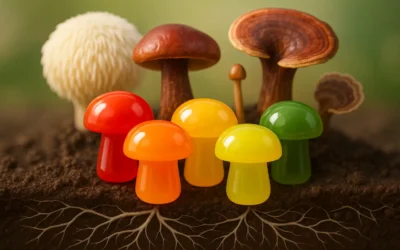⚠️ Harm Reduction & Safety Warning The following guide is for educational and identification purposes only. Psilocybin mushrooms are illegal in many jurisdictions. Misidentification of wild fungi can lead to fatal poisoning. This site does not encourage the consumption, cultivation, or sale of controlled substances.
If you’re searching for information about types of psychedelic mushrooms, you’ve found the most comprehensive guide available. This scientific resource covers all major psilocybin mushroom species, including detailed identification characteristics, potency levels, and important safety information.
Ever wondered about the fascinating world of psychedelic mushrooms? These natural mind-altering fungi have been used for centuries in spiritual practices and are now gaining renewed attention for their potential benefits.
| Species Name | Common Name | Avg. Potency | Key ID Feature |
|---|---|---|---|
| Psilocybe cubensis | Golden Teacher | Moderate (0.6-1.2%) | Golden caps, grows on dung, robust stem |
| Psilocybe semilanceata | Liberty Cap | High (~1.0%) | Pointed conical cap, grows in grass (never wood) |
| Psilocybe azurescens | Flying Saucers | Very High (up to 1.8%) | Caramel cap, coastal dune habitat, intense blueing |
| Panaeolus cyanescens | Blue Meanies | Extreme (up to 2.5%) | Small, frail, paper-thin cap, jet black spore print |
| Psilocybe cyanescens | Wavy Caps | High (0.85-1.7%) | Wavy cap margin, woodchip habitat (urban/parks) |
What are psychedelic mushrooms
Psychedelic mushrooms are fungi containing psychoactive compounds, primarily psilocybin and psilocin. Over 200 species across multiple genera produce these compounds, with the Psilocybe genus alone containing over 100 psychoactive species.
Key facts about magic mushroom types:
- Effects typically last 4-6 hours
- Found on every continent except Antarctica
- Greatest diversity in subtropical and tropical regions
- Psilocybin content varies from 0.1% to 2.5% by dry weight
Complete list of psilocybin mushroom species by genus
Psilocybe genus – the most common psychedelic mushrooms
The Psilocybe genus contains the most species of psilocybin mushrooms. Here are the major types:
Psilocybe cubensis – “Golden Teacher” and other varieties
Scientific classification: Psilocybe cubensis Common names: Golden Teacher, B+, Penis Envy, Amazonian Potency: 0.6-1.2% psilocybin Habitat: Dung-loving, tropical/subtropical regions Identification:
- Cap: 2-8cm, golden-brown to yellowish
- Bruising: Blue when damaged
- Spore print: Purple-brown to purple-black
Psilocybe cubensis types include over 60 cultivated strains, but they’re all the same species with minor variations in appearance and potency.
Psilocybe semilanceata – Liberty Caps
Potency: 0.8-1.0% psilocybin (higher than cubensis) Habitat: Grassy meadows, not on dung Distribution: Northern Europe, North America Key features:
- Distinctive pointed cap (hence “liberty cap”)
- Small size (1-2.5cm cap)
- Never grows directly on dung
Psilocybe cyanescens – Wavy Caps
Potency: 0.85-1.68% psilocybin Habitat: Wood chips, mulched gardens Notable: Common in Pacific Northwest Identification:
- Wavy cap margins when mature
- Caramel to chestnut brown color
- Strong blue bruising
Psilocybe azurescens – Flying Saucers
Potency: Up to 1.8% psilocybin (most potent psilocybin mushroom) Habitat: Coastal dune grasses, wood debris Range: Oregon/Washington coast Warning: Can cause temporary paralysis at high doses
Other notable Psilocybe species
- Psilocybe stuntzii: “Blue Ringers,” urban lawns
- Psilocybe mexicana: Historical use by Aztecs, produces sclerotia
- Psilocybe tampanensis: Produces “Philosopher’s Stones” (sclerotia)
- Psilocybe baeocystis: “Bottle caps,” Pacific Northwest
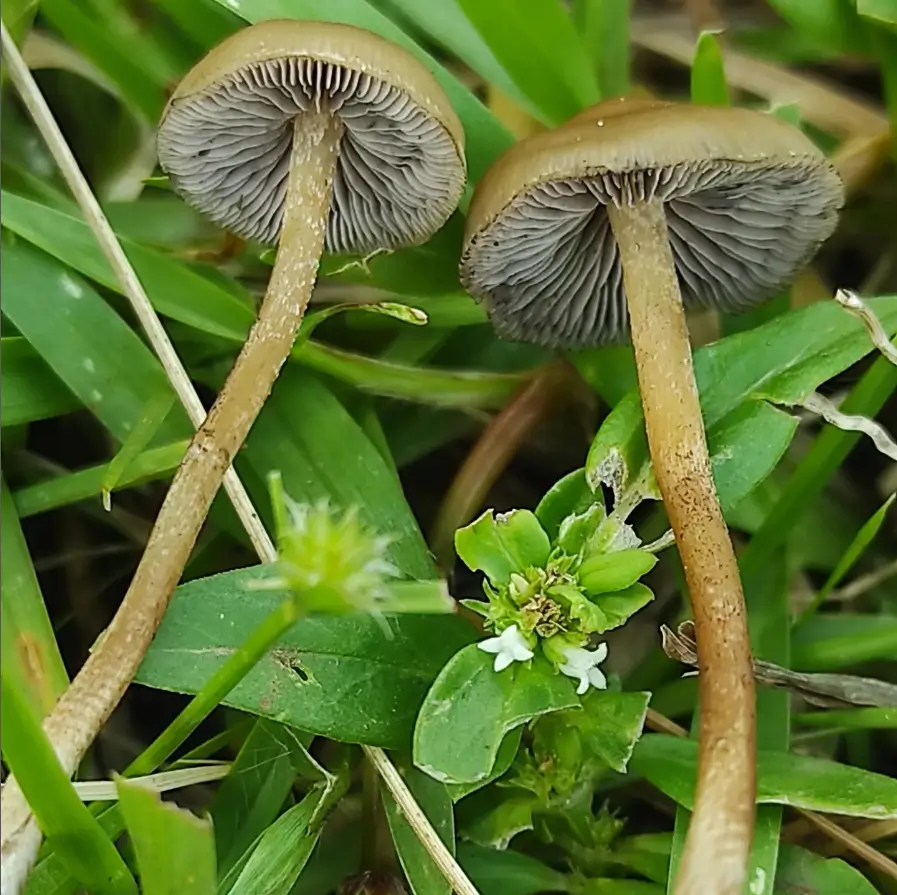
Panaeolus – different types of hallucinogenic mushrooms
Are all Panaeolus hallucinogenic? No, but several species are psychoactive:
Panaeolus cyanescens – Blue Meanies
Not to be confused with: Psilocybe cubensis “Blue Meanie” strain Potency: 2.5% psilocybin (extremely potent) Habitat: Tropical, dung-loving Identification:
- Small, light-colored caps
- Intense blue bruising
- Black spore print
Panaeolus cyanescens vs cubensis: Pan cyans are 2-3x more potent than cubensis.
Panaeolus cinctulus – Banded Mottlegill
Potency: 0.5-0.9% psilocybin Distribution: Worldwide, very common Habitat: Lawns, compost, gardens Note: Variable potency, some non-active
Other Panaeolus species
- Panaeolus foenisecii: Not hallucinogenic despite rumors
- Panaeolus olivaceus: Potentially psychoactive
- Panaeolus tropicalis: Active, tropical distribution
Paul Stamets, a legendary mycologist, has been a pivotal figure in studying and advocating Psilocybe mushrooms. His work has led to the discovery of new species, such as Psilocybe stametsii, named in his honour. Stamets’ contributions to the field include extensive research, publications like “Psilocybin Mushrooms of the World,” and efforts in promoting the therapeutic potential of psilocybin.
Other genera containing psychedelic mushroom species
Gymnopilus – Laughing Gyms
- Gymnopilus junonius: Low potency, bitter taste
- Gymnopilus luteofolius: Psychoactive, bright orange
- Effects: Known for causing uncontrollable laughter
Pluteus
- Pluteus salicinus: Contains psilocybin
- Habitat: Dead wood
- Identification: Free gills, pink spore print
Amanita muscaria – different type of psychedelic
Important: Not a psilocybin mushroom Active compounds: Muscimol and ibotenic acid Effects: Completely different from psilocybin Safety: More toxic, requires preparation
Psilocybin content by species – potency comparison
| Species | Psilocybin % | Psilocin % | Total Active % |
|---|---|---|---|
| Panaeolus cyanescens | 2.5 | 1.2 | 3.7 |
| Psilocybe azurescens | 1.8 | 0.5 | 2.3 |
| Psilocybe semilanceata | 1.0 | 0.0 | 1.0 |
| Psilocybe cyanescens | 0.9 | 0.2 | 1.1 |
| Psilocybe cubensis | 0.6 | 0.1 | 0.7 |
| Panaeolus cinctulus | 0.5 | 0.1 | 0.6 |
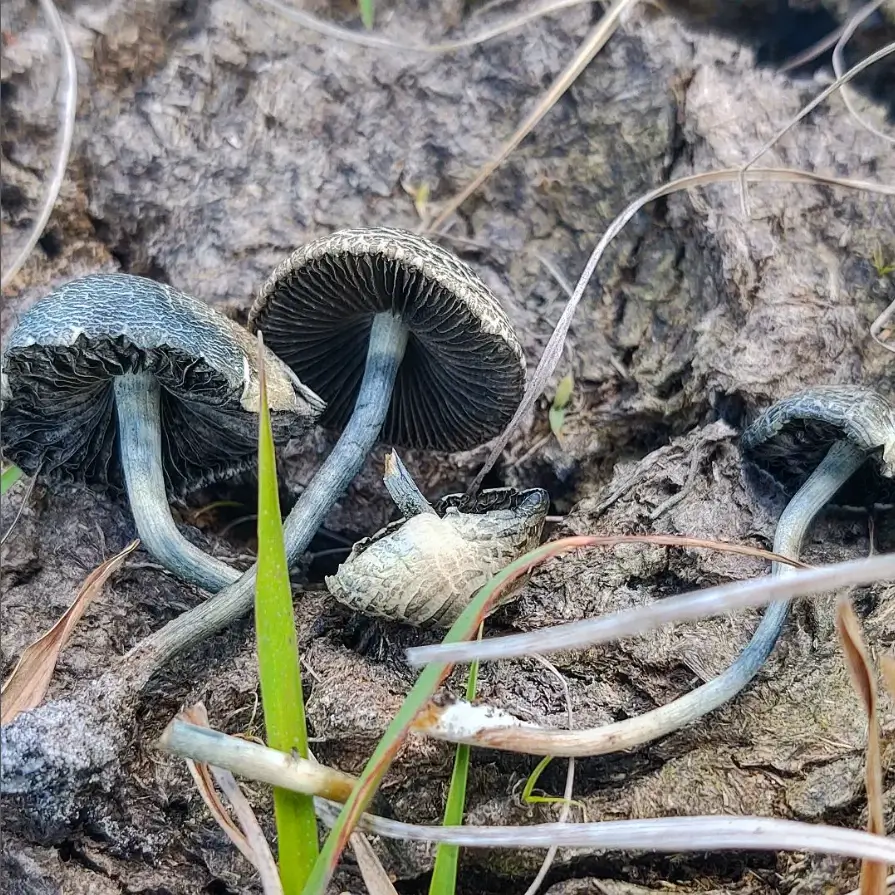
Identification guide for common psychedelic mushrooms
What do psychedelic mushrooms look like?
Universal features of psilocybin mushrooms:
- Blue bruising when handled (most reliable indicator)
- Dark spore prints (purple-brown to black)
- Small to medium size (rarely over 15cm tall)
Psilocybe mushroom identification characteristics
Cap features:
- Hygrophanous (changes color when drying)
- Often sticky when moist
- Usually brown to golden
Stem characteristics:
- Often has remnants of veil
- Bruises blue when damaged
- May have blue-green base
Dangerous look-alikes
Never consume wild mushrooms without expert identification
Deadly species that resemble psilocybin mushrooms:
- Galerina marginata: Deadly, grows on wood like P. cyanescens
- Conocybe filaris: Contains same toxins as death cap
- Cortinarius species: Kidney-destroying toxins
Regional guide to psychedelic mushroom types
North American psilocybe species
Pacific Northwest:
- P. cyanescens (most common)
- P. azurescens (coastal)
- P. stuntzii (urban)
- P. baeocystis
Southern US:
- P. cubensis (Gulf states)
- Panaeolus cyanescens (Florida, Hawaii)
- P. caerulescens (rare)
Types of psychedelic mushrooms in Washington state
Washington has high diversity:
- P. cyanescens – wood chips
- P. stuntzii – lawns
- P. baeocystis – conifer mulch
- P. semilanceata – mountain meadows
Liberty caps in Oregon
Oregon liberty caps (P. semilanceata) fruit September-December in:
- Coastal grasslands
- Mountain meadows above 1000ft
- Never in forests or on dung
Cultivation information
Can you grow different types of psilocybin mushrooms?
Easily cultivated species:
- P. cubensis (all varieties)
- P. mexicana
- P. tampanensis
- Panaeolus cyanescens (advanced)
Difficult/impossible to cultivate:
- P. semilanceata
- P. azurescens
- P. cyanescens (very difficult)
Growing psilocybe cyanescens
Requires:
- Hardwood chips
- Outdoor bed
- Cool temperatures
- 6-12 months establishment
Safety Profile & Risk Assessment
Disclaimer: The following information is based on current pharmacological research and is for harm reduction education only. It does not constitute medical advice.
1. Physiological Toxicity
Research generally classifies psilocybin as having a low toxicity profile compared to other psychoactive substances.
- Lethal Dose: According to a widely cited comparative analysis by Gable (2004), psilocybin has one of the highest “safety ratios” (the gap between an active dose and a lethal dose) of all commonly used drugs, ranking safer than alcohol, tobacco, or caffeine in terms of acute lethal toxicity.
- Organ Damage: A 2010 study by Professor David Nutt published in The Lancet ranked magic mushrooms as having the lowest harm score to both the user and others among 20 drugs studied.
- The Real Physical Danger: The primary physical risk associated with psilocybin is not the compound itself, but misidentification. Confusing a Psilocybe species with a deadly Galerina or Conocybe species can be fatal.
2. Psychological Risks (“The Bad Trip”)
While physical toxicity is low, psychological risks are significant.
- Challenging Experiences: A 2016 study by Johns Hopkins University (Carbonaro et al.) found that while 84% of respondents reported benefiting from their experience, 39% rated a challenging experience as one of the top five most difficult of their lives. These experiences can include intense panic, anxiety, and paranoia.
- Psychosis Risk: Clinical guidelines for hallucinogen research (Johnson et al., 2008) strictly exclude individuals with a personal or family history of psychotic disorders (such as schizophrenia or bipolar mania), as psychedelics may trigger or exacerbate latent symptoms in predisposed individuals.
3. Legal Status (2025 Outlook)
Exceptions: In nations like Jamaica, Brazil, and The Netherlands (specifically psilocybin truffles), legal frameworks differ, allowing for consumption in certain contexts.
International: Psilocybin and psilocin are listed as Schedule I substances under the UN Convention on Psychotropic Substances (1971).
United States: Federally, psilocybin remains a Schedule I drug. However, states like Oregon and Colorado have enacted specific regulated access frameworks.
Mushroom identification safety rules
- Never eat wild mushrooms without 100% identification
- Multiple features must match for positive ID
- Spore prints are essential for identification
- When in doubt, don’t consume
Frequently asked questions about psychedelic mushroom types
What are the most common psychedelic mushrooms? P. cubensis globally, P. semilanceata in temperate regions, Panaeolus cinctulus in lawns worldwide.
How many types of magic mushrooms are there? Over 200 species across at least 8 genera contain psilocybin or related compounds.
Are shiitake mushrooms psychedelic? No, shiitake mushrooms contain no psychoactive compounds.
What’s the difference between different types of shrooms? Main differences are potency (0.1-2.5% psilocybin), habitat, appearance, and growing region.
Which mushrooms have psilocybin? Primarily Psilocybe species, some Panaeolus, Gymnopilus, Pluteus, and others. Blue bruising is the best indicator.
Are turkey tail mushrooms psychedelic? No, turkey tail mushrooms are medicinal but not psychoactive.
What type of mushrooms are psychedelic? Small to medium gilled mushrooms that bruise blue, primarily from Psilocybe and Panaeolus genera.
Most potent psilocybin mushroom? Psilocybe azurescens (up to 1.8% psilocybin) and Panaeolus cyanescens (up to 2.5%).
Conclusion
This guide covers all major types of psychedelic mushrooms for educational purposes. Remember that these mushrooms are illegal in most places and can be dangerous if misidentified. Never consume wild mushrooms without absolute certainty of identification, and always follow local laws.
Educational disclaimer: This information is provided for academic and harm reduction purposes only. It does not encourage illegal activities or consumption of controlled substances.
Scientific references
- Stamets, P. (1996). Psilocybin Mushrooms of the World
- Guzman, G. (2005). Species diversity of the genus Psilocybe
- Arora, D. (1986). Mushrooms Demystified
- Nicholas, L.G. & Ogame, K. (2006). Psilocybin Mushroom Handbook
consumed. Muscimol and ibotenic acid can cause respiratory distress, convulsions, or coma in extreme overdoses.
Tolerance and Addiction
Psilocybin mushrooms are not addictive. After use, the body rapidly builds tolerance, making daily use ineffective. This tolerance typically resets after 1-2 weeks. Classical psychedelics show virtually no addiction potential in drug harm assessments.
Legal Considerations
Possession of psilocybin mushrooms is illegal in many countries (Schedule I in the USA). However, some jurisdictions have decriminalized or legalized them for therapeutic use. Amanita muscaria is not controlled in most places since it doesn’t contain psilocybin.
Always know your local laws to avoid legal trouble.

